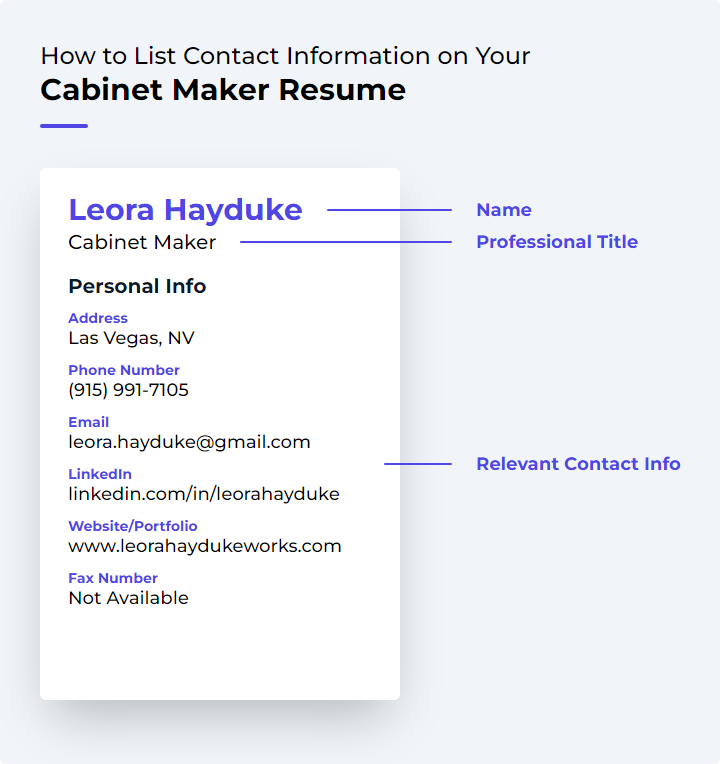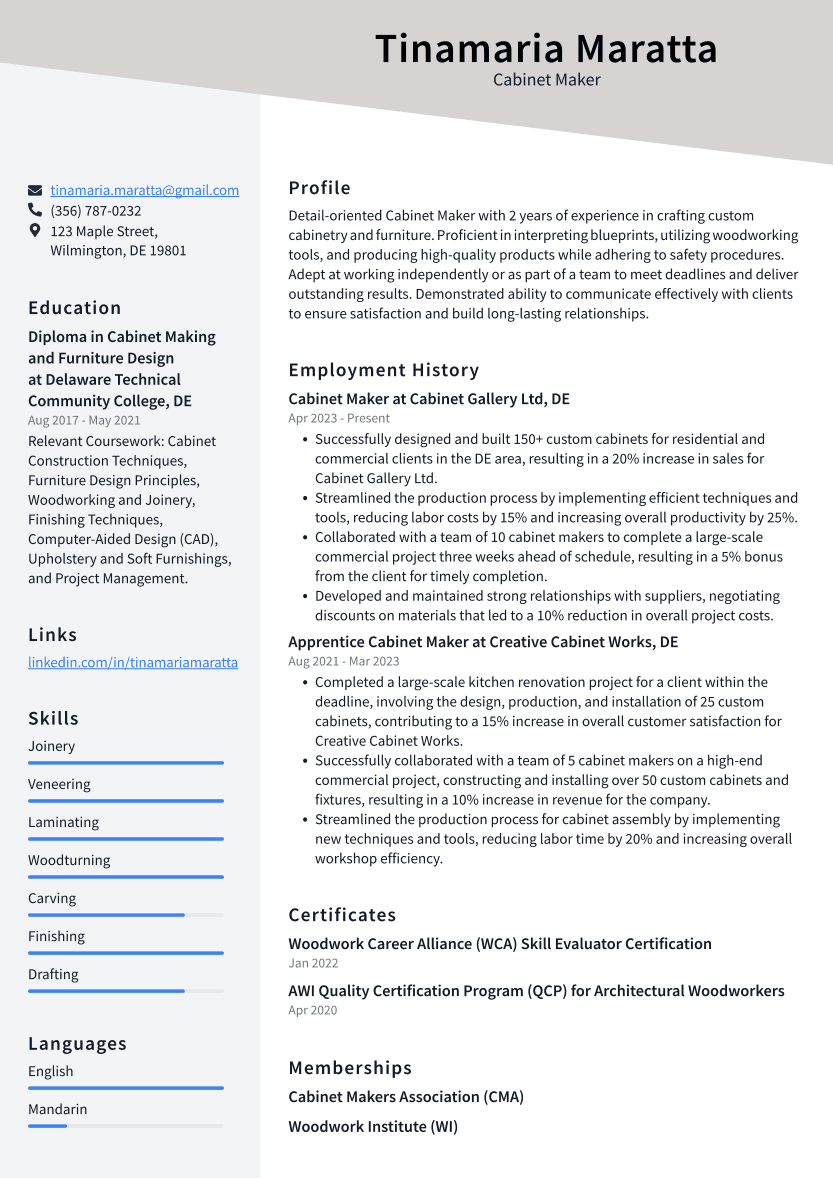Cabinet Maker Resume Examples
Writing a great cabinet maker resume is important because it is one of the first things a potential employer will see when they are considering you for a position. It is your opportunity to make a good first impression and sell yourself as the best candidate for the job.
Create your resume
Select from 7 professional resume templates
If you're looking for inspiration when it comes to drafting your own cabinet maker resume, look no further than the samples below. These resumes will help you highlight your experience and qualifications in the most effective way possible, giving you the best chance of landing the cabinet maker job you're after.
Essential Components of a Cabinet Maker's Resume
A Cabinet Maker's resume is a crucial tool for showcasing your expertise, experience, and professional capabilities. It serves as your formal introduction to potential employers, allowing them to assess your suitability for the role. A well-structured Cabinet Maker's resume includes sections such as contact information, an objective statement, skills and competencies, work experience, education and certifications, a portfolio of past projects, and references. This guide will delve into each section, explaining its significance and offering tips to enhance your resume's impact.
1. Contact Information
At the top of your resume, the Contact Information section should be prominently displayed, providing employers with the means to contact you for further discussion or to arrange an interview.

Include your full name, address, phone number, and a professional email address. It's also beneficial to add your LinkedIn profile or professional website if available, showcasing additional work samples and detailed information about your professional background.
Ensure accuracy and professionalism in this section to make a positive first impression. If you're open to relocation, mention your willingness to move for the right opportunity.
2. Objective Statement
The Objective Statement is a brief yet impactful section that follows your contact information. It should clearly articulate your career goals and highlight your key skills, emphasizing what you can contribute to a potential employer.
An effective objective statement for a Cabinet Maker might read: "A highly skilled and detail-oriented Cabinet Maker with over ten years of experience, seeking to leverage my craftsmanship and knowledge of wood varieties in a dynamic new role."
Customize your objective statement for each job application, aligning it with the job description to demonstrate your attention to detail and how you can be an asset to the employer.
3. Skills and Competencies
The Skills and Competencies section is where you list your technical abilities, personal attributes, and professional knowledge that qualify you for the job. Highlight skills such as technical proficiency with tools and machinery, attention to detail, physical stamina, creativity, mathematical skills, problem-solving, communication, time management, and safety awareness.
Provide concrete examples of how you've applied these skills in previous roles to give employers a clear picture of your capabilities.
4. Work Experience
The Work Experience section is a cornerstone of your resume, showcasing your practical expertise and accomplishments. List each position with the job title, company name, location, and dates of employment, along with a description of your responsibilities and achievements.
Highlight experiences with various materials, cabinetry types, and any leadership roles you've held. Use action verbs and quantify results to convey your contributions effectively.
5. Education and Certifications
In the Education and Certifications section, list your academic qualifications, vocational training, and any relevant certifications. Include the names of institutions, course titles, and completion dates. Mention apprenticeships, workshops, and seminars to demonstrate your commitment to ongoing professional development.
6. Portfolio of Past Projects
A Portfolio of Past Projects is a visual testament to your craftsmanship and versatility. Include high-quality photos of your work, accompanied by descriptions that detail the materials, techniques, and challenges of each project. Show a range of styles and finishes to illustrate your adaptability.
Consider creating an online portfolio to share with potential employers, showcasing your technical skills and familiarity with digital platforms.
7. References
The References section provides employers with the opportunity to verify your professional abilities and work ethic through individuals who have previously collaborated with you. List references with their full names, titles, companies, contact information, and your relationship to them.
Always obtain permission before listing someone as a reference. If references are not immediately required, you can indicate that they are available upon request.
By carefully crafting each section of your resume, you can present a compelling narrative of your professional journey as a Cabinet Maker, increasing your chances of securing the job you desire.
